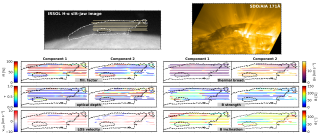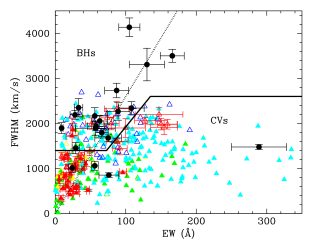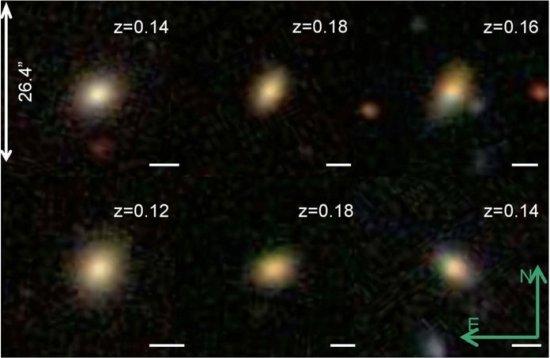El descubrimiento de que las galaxias mas masivas eran mucho mas compactas en el pasado que las galaxias que tienen igual masa hoy, representa uno de los mayores retos para los escenarios actuales que describen la formacion de las galaxias. Una de las ideas que se han sugerido es que estas galaxias compactas se han ido transformado con el tiempo en los núcleos de las galaxias mas masivas que vemos hoy en dia. Nuestro grupo ha llevado a cabo dos estudios paralelos para por un lado tratar de identificar galaxias masivas y compactas que pudieran haber sobrevivido intactas desde su formación inicial y por lo tanto estudiar sus propiedades y otro estudio para explorar la evolución estructural y dinámica de estos objetos a medida que el tiempo transcurre. Hemos encontrado que hoy en dia la poblacion de galaxias masivas y compactas es extremadamente pequeña (<0.03% de las galaxias masivas) y sorprendentemente son objetos relativamente jovenes. Estos resultados sugieren que las galaxias mas masivas se forman siempre de manera compacta y luego evolucionan hasta formar la poblacion actual. Ademas, este analisis nos indica que la evolucion de estos objetos compactos y lejanos debe ser muy rapida pues ya no es posible encontrar ninguno de estas galaxias en la actualidad. Por otro lado, nuestro análisis de la evolución dinamica de los objetos mas masivos es compatible con un escenario donde el halo de materia oscura ya estaba formado en el pasado y el enorme crecimiento observado en tamaño de estos objetos solo se ha producido en la distribución de sus estrellas. En conjunto, nuestros resultados parecen indicar que estas galaxias masivas se formaron en un estallido muy intenso de formación estelar y luego han evolucionado hasta convertirse en el nucleo de las galaxias mas masivas del universo cercano a traves de la acrecion de otras galaxias satelites mas pequeñas.
Advertised on
References
Trujillo, I. et al. (2009). ApJL 692, 118
It may interest you
-
 O ne of the key challenges in astronomy is to measure accurate distances to celestial objects. Knowing distances is crucial since it allows us to measure physical properties such as size, mass and luminosity. Since we can’t go out and use a tape-measure, a range of different approaches have been developed. Many of these approaches rely on using “standard candles”. Standard candles are objects (for example stars or supernovae) for which we know their intrinsic ”true” brightness. Once we know this, then their observed brightness compared to their intrinsic brightness gives us a distance to theAdvertised on
O ne of the key challenges in astronomy is to measure accurate distances to celestial objects. Knowing distances is crucial since it allows us to measure physical properties such as size, mass and luminosity. Since we can’t go out and use a tape-measure, a range of different approaches have been developed. Many of these approaches rely on using “standard candles”. Standard candles are objects (for example stars or supernovae) for which we know their intrinsic ”true” brightness. Once we know this, then their observed brightness compared to their intrinsic brightness gives us a distance to theAdvertised on -
 Understanding the magnetic field in the corona is key for explaining the fascinating physical processes occurring there. However, the extreme conditions in the outer solar atmosphere hamper the possibility of acquiring observations with enough quality to infer the coronal magnetic field. Analyzing observations of overdensities of cold plasma supported by coronal magnetic fields, including filaments and prominences, allows us to understand such magnetic fields and their interaction with plasma. In this study, we have analyzed an active region prominence, a type of prominence that has barelyAdvertised on
Understanding the magnetic field in the corona is key for explaining the fascinating physical processes occurring there. However, the extreme conditions in the outer solar atmosphere hamper the possibility of acquiring observations with enough quality to infer the coronal magnetic field. Analyzing observations of overdensities of cold plasma supported by coronal magnetic fields, including filaments and prominences, allows us to understand such magnetic fields and their interaction with plasma. In this study, we have analyzed an active region prominence, a type of prominence that has barelyAdvertised on -
 Dormant black holes in X-ray transients can be identified by the presence of broad Hα emission lines from quiescent accretion discs. Unfortunately, short-period cataclysmic variables can also produce broad Hα lines, especially when viewed at high inclinations, and are thus a major source of contamination. Here we compare the full width at half maximum (FWHM) and equivalent width (EW) of the Hα line in a sample of 20 quiescent black hole transients and 354 cataclysmic variables (305 from SDSS I to IV) with secure orbital periods (Porb) and find that: (1) FWHM and EW values decrease with PorbAdvertised on
Dormant black holes in X-ray transients can be identified by the presence of broad Hα emission lines from quiescent accretion discs. Unfortunately, short-period cataclysmic variables can also produce broad Hα lines, especially when viewed at high inclinations, and are thus a major source of contamination. Here we compare the full width at half maximum (FWHM) and equivalent width (EW) of the Hα line in a sample of 20 quiescent black hole transients and 354 cataclysmic variables (305 from SDSS I to IV) with secure orbital periods (Porb) and find that: (1) FWHM and EW values decrease with PorbAdvertised on
